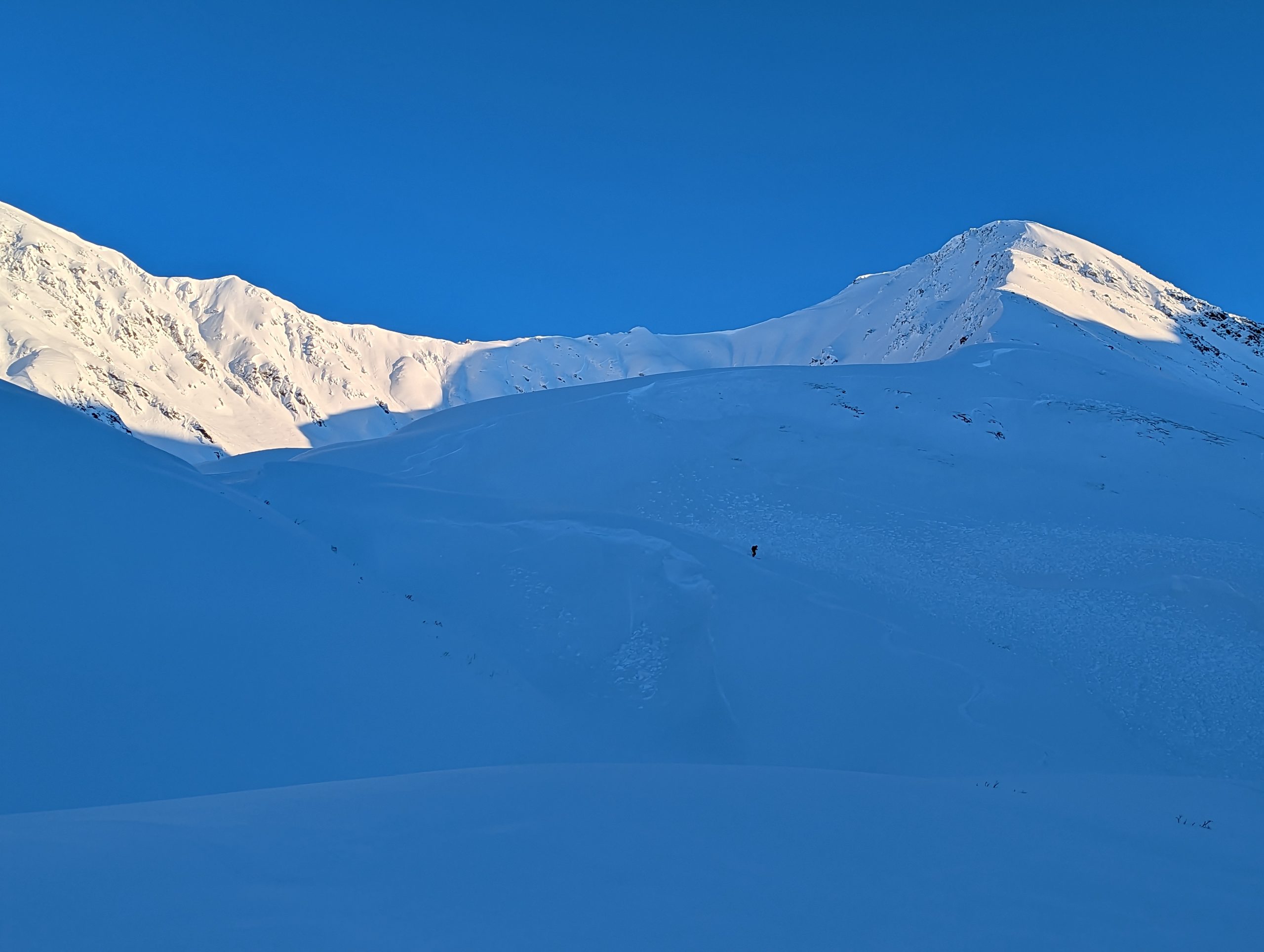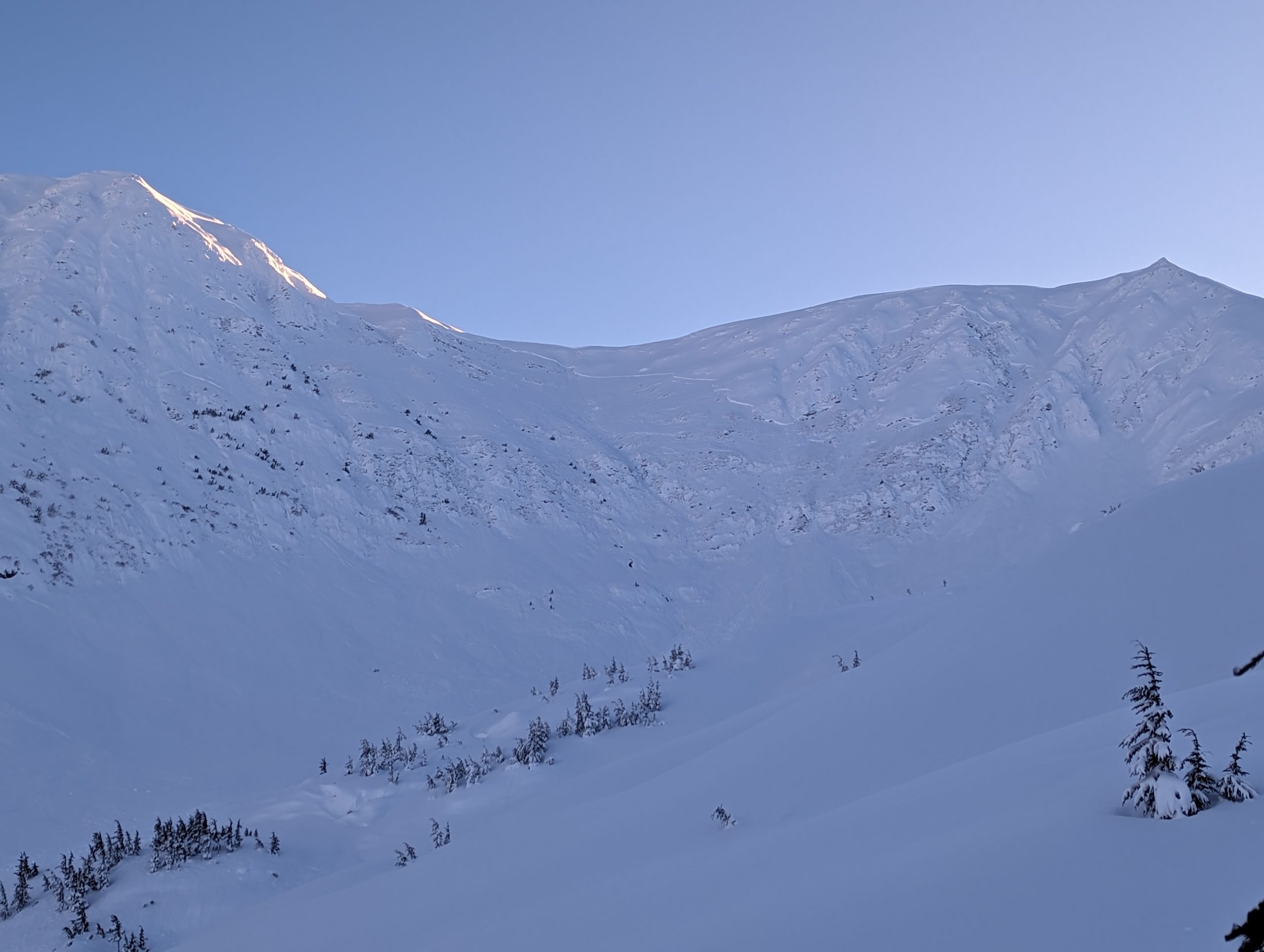Turnagain Pass
|
|
The avalanche danger is MODERATE above 1000′ today. Triggering a very large avalanche on a buried weak layer 3-6′ deep is possible. We have seen widespread avalanches on deeply buried weak layers this week, including many human triggered avalanches that were remote triggered from low angle terrain adjacent to steeper slopes. We recommend conservative terrain selection and decision-making today because the consequences of being involved with one of these large avalanches are very serious. Below 1000′ the avalanche danger is LOW.
SUMMIT LAKE / SEWARD / LOST LAKE / SNUG HARBOR: Similar conditions exist across the region with the potential for very large avalanches releasing on deeply buried weak layers. Observations from Summit Lake this week showed widespread avalanche activity and a very weak snowpack in many areas. A cautious mindset is recommended to avoid being involved with a very large avalanche.
Join us at the Girdwood Brewing Co. from 5:30-7:00 p.m. on Thursday, Jan. 19 for the second Forecaster Chat of the season. CNFAIC forecaster Andrew Schauer will open the night with an overview of the state of the snowpack, followed by a discussion on how safe terrain management changes depending on the type of avalanche problem at hand. More details here.
Filing your PFD application? Our non-profit partner the Friends of Chugach Avalanche Center is an official Pick. Click. Give. organization, so please consider donating part of your PFD to support our avalanche forecast and public avalanche safety mission!!!



